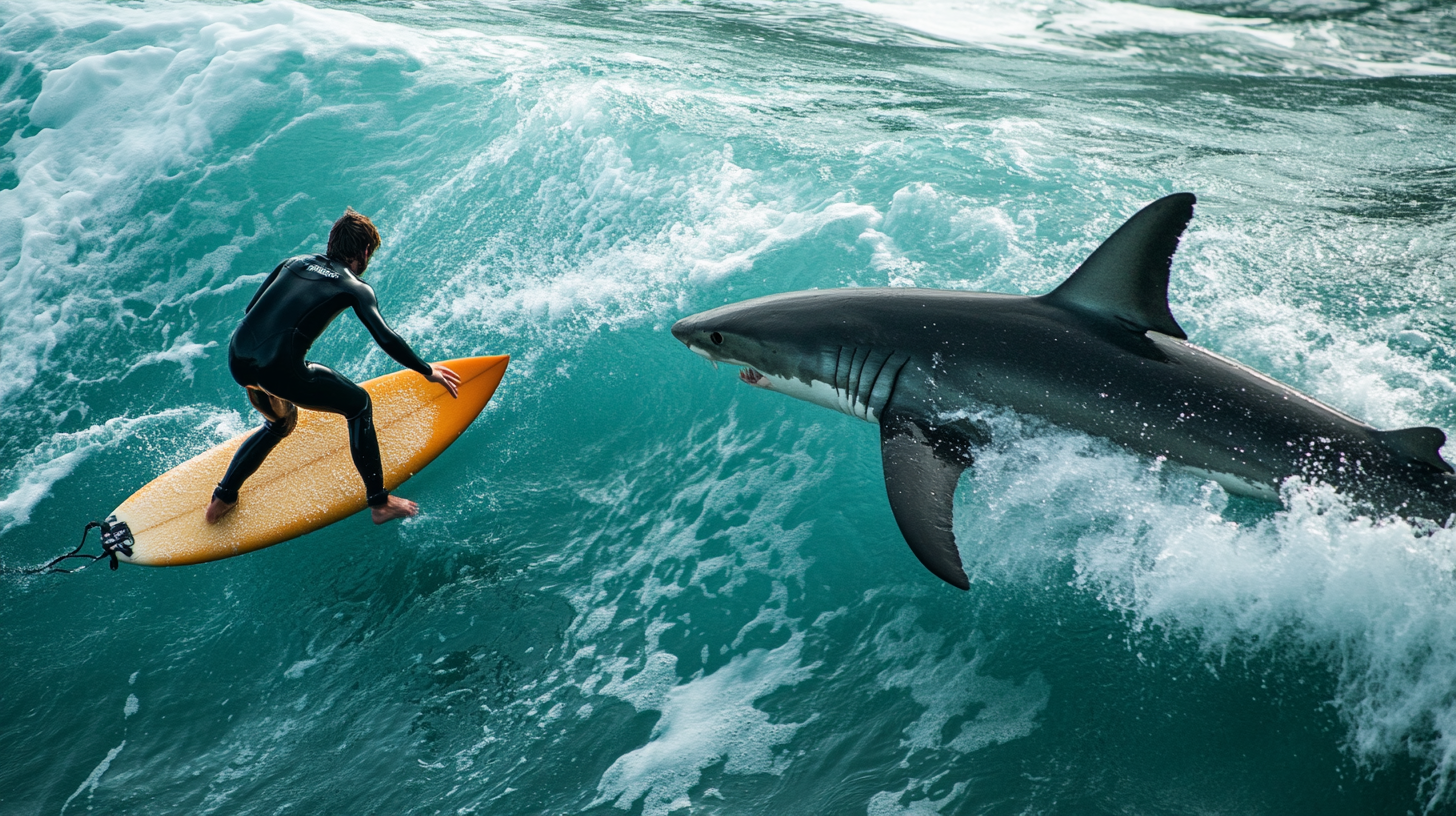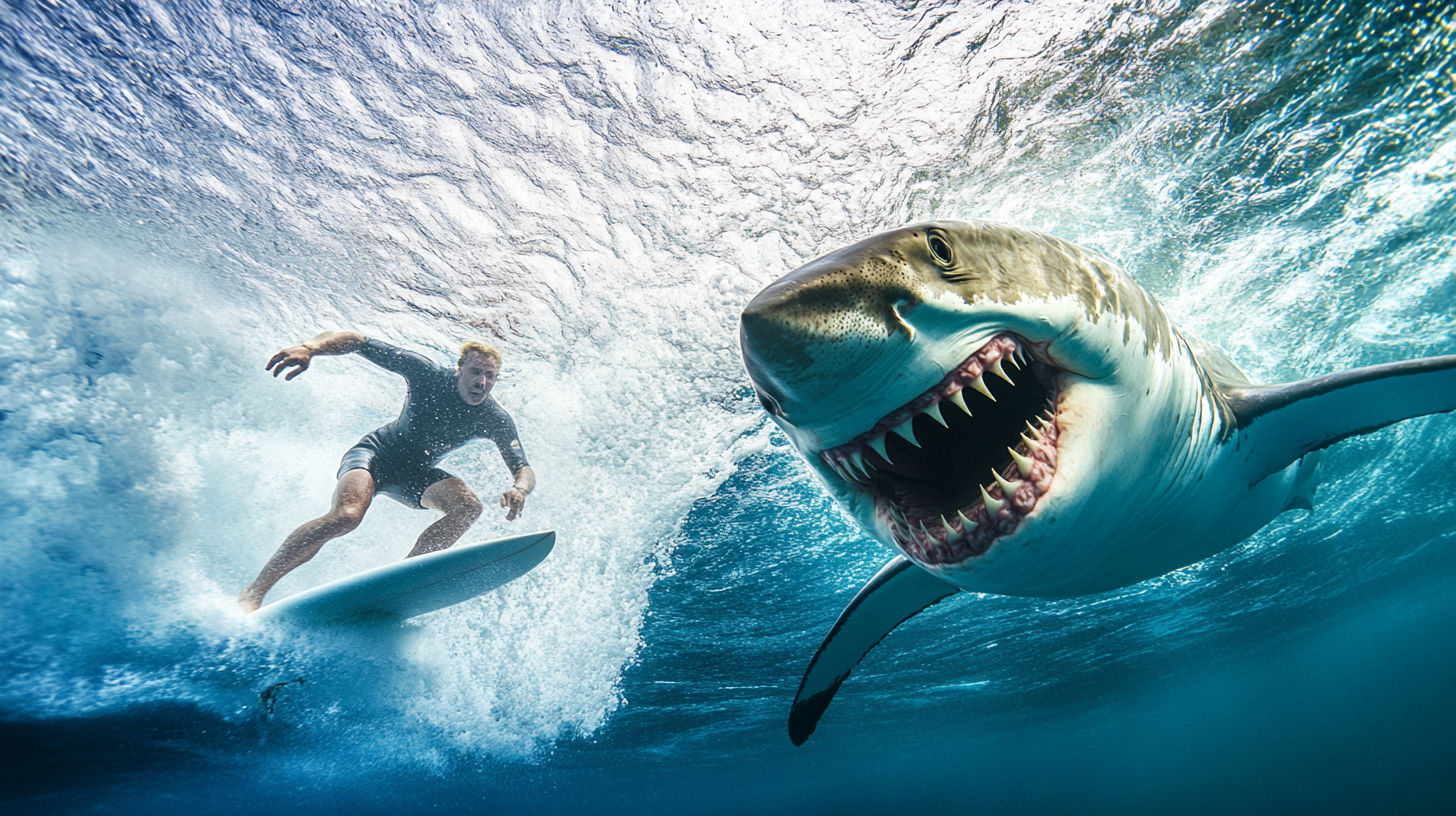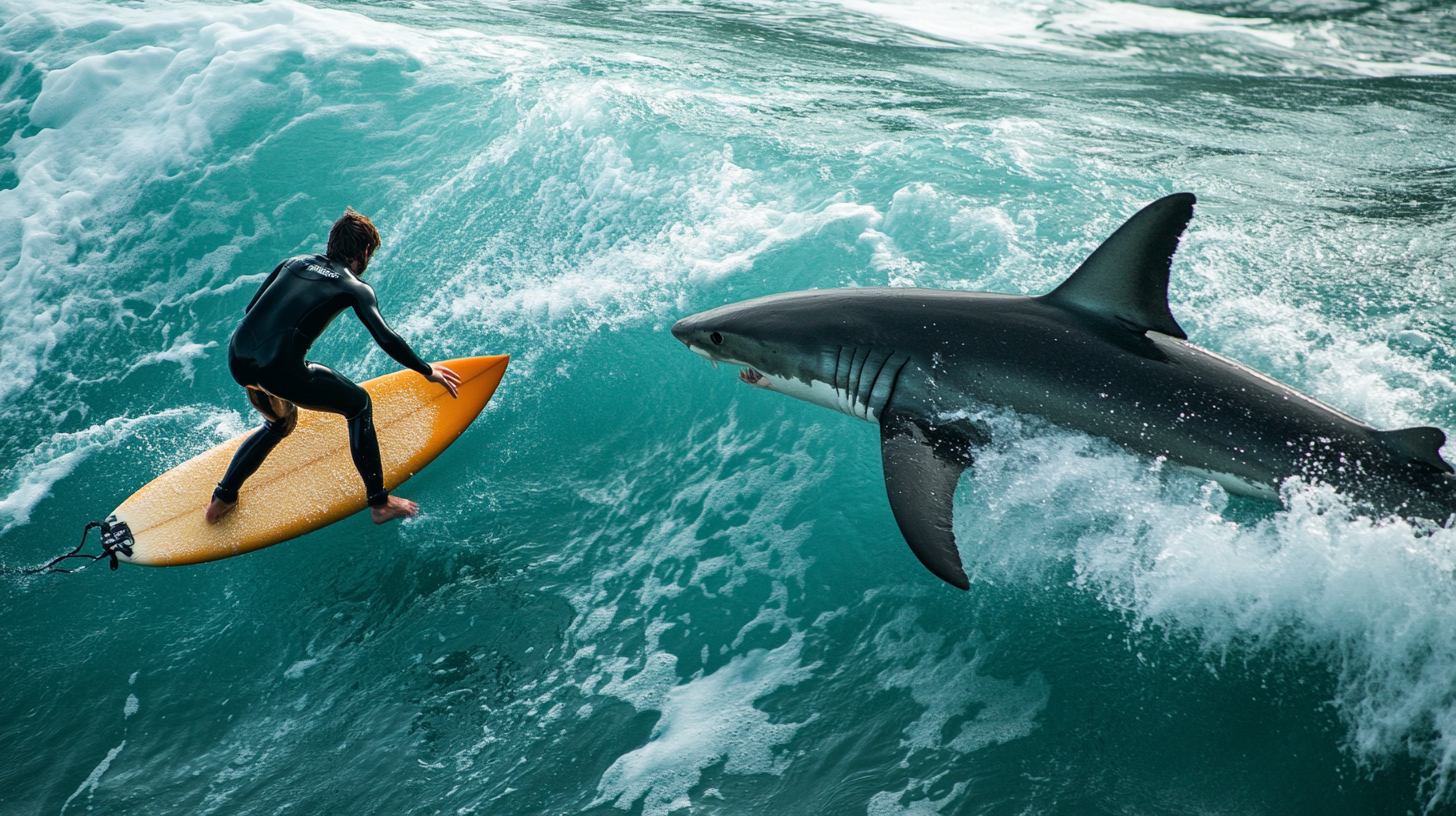

Understanding the recent spike in shark attacks
In recent months, Florida has seen a noticeable increase in shark attacks, particularly along its eastern coastline. According to marine biologists, this surge can be attributed to a combination of environmental and behavioural factors. Warmer ocean temperatures, driven by climate change, have led to an increase in the number of sharks migrating closer to shore in search of food. Additionally, the abundance of baitfish near popular surfing spots has drawn more sharks into areas frequented by humans.
Another contributing factor is the growing number of people engaging in water activities. Florida’s beaches are a hotspot for surfers, swimmers, and tourists, which naturally increases the likelihood of encounters between sharks and humans. Experts also point out that many of these incidents are cases of mistaken identity, where sharks confuse surfers or swimmers for prey, such as seals or fish.
Despite the alarming rise in attacks, it’s important to note that the majority of these encounters are non-fatal. Most shark bites are exploratory, with the shark quickly realising that humans are not their preferred food source. However, the increase in incidents has understandably raised concerns among both locals and visitors to Florida’s beaches.
“Sharks are not actively hunting humans,” says Dr. Gavin Naylor, a leading shark expert. “They are simply following their natural instincts, and unfortunately, sometimes that leads to unintended interactions with people.”
While the spike in shark attacks is concerning, understanding the reasons behind it can help surfers and beachgoers make informed decisions about their safety in the water.
The resilience of Florida’s surfing community
Despite the recent surge in shark attacks, Florida’s surfing community remains remarkably steadfast. For many surfers, the ocean is more than just a place to catch waves—it’s a way of life. The thrill of riding the perfect wave, the connection with nature, and the camaraderie among fellow surfers are powerful motivators that outweigh the risks. Even with the heightened awareness of shark activity, surfers continue to flock to the beaches, boards in hand, ready to embrace the ocean’s challenges.
Part of this resilience stems from the community’s deep understanding of the ocean and its inhabitants. Many seasoned surfers have spent years in the water and are well aware of the presence of sharks. They recognise that the ocean is a shared space, and sharks are simply part of the natural ecosystem. For these surfers, the risk of an encounter is just another element of the sport, much like the unpredictability of the waves or the occasional wipeout.
Moreover, the surfing culture in Florida is built on a foundation of respect for the ocean. Surfers often speak of the “unwritten code” that governs their behaviour in the water, which includes not only respect for fellow surfers but also for the marine life that shares the space. This respect fosters a sense of responsibility and awareness, which helps surfers stay calm and focused, even in the face of potential danger.
It’s also worth noting that the surfing community is incredibly tight-knit. When an incident occurs, word spreads quickly, and surfers rally around each other, offering support and advice. This sense of solidarity helps to alleviate fear and encourages surfers to continue doing what they love. Whether it’s through sharing tips on how to avoid shark-prone areas or simply offering a reassuring word, the community plays a crucial role in maintaining the confidence of its members.
For many, the risk of a shark encounter is simply part of the adventure. As one local surfer put it, “You can’t let fear control you. If you’re out there thinking about sharks the whole time, you’re not going to enjoy the ride. It’s about being smart, staying aware, and respecting the ocean.” This mindset, shared by many in the surfing community, is a testament to their resilience and passion for the sport.
Safety measures and expert advice for surfers
For surfers, staying safe in shark-prone waters requires a combination of awareness, preparation, and adherence to expert advice. While the risk of a shark encounter can never be completely eliminated, there are several practical measures that surfers can take to reduce the likelihood of an incident.
One of the most important recommendations from marine experts is to avoid surfing during times when sharks are most active. Sharks tend to be more active during dawn and dusk, as these are prime feeding times. Surfers are advised to stick to daylight hours when visibility is better, both for themselves and for the sharks, which are less likely to mistake a human for prey in clearer conditions.
Another key piece of advice is to avoid wearing shiny jewellery or brightly coloured wetsuits, as these can attract sharks. The reflective surfaces of jewellery can resemble the scales of fish, while certain colours, particularly yellow and white, are thought to be more visible to sharks. Opting for darker, more muted colours can help surfers blend in with their surroundings and reduce the chances of drawing unwanted attention.
Experts also recommend surfing in groups rather than alone. Sharks are more likely to approach solitary individuals, so staying close to other surfers can provide an added layer of safety. Additionally, having others nearby means that help is readily available in the unlikely event of an encounter.
It’s also crucial to be mindful of the presence of baitfish or seabirds diving into the water, as these are signs that sharks may be nearby. Surfers should avoid areas where large schools of fish are present, as these are prime hunting grounds for sharks. Similarly, if seabirds are seen diving into the water, it could indicate that predators, including sharks, are feeding below the surface.
For those who want to take extra precautions, there are now several shark deterrent devices available on the market. These range from personal electronic devices that emit electrical pulses to wetsuits designed to camouflage surfers from sharks. While these technologies are not foolproof, they can provide an additional layer of protection for those who are particularly concerned about shark encounters.
Finally, experts stress the importance of staying calm and composed if a shark is spotted. Panicking or making sudden movements can attract the shark’s attention. Instead, surfers are advised to slowly and steadily paddle back to shore, keeping an eye on the shark’s movements without splashing or thrashing in the water.
“The key is to remain calm and not to act like prey,” advises Dr. Naylor. “Sharks are curious creatures, but they are also cautious. If you stay calm and move deliberately, you’re less likely to provoke an aggressive response.”
By following these safety measures and staying informed about shark behaviour, surfers can continue to enjoy the waves while minimising the risks associated with shark encounters.
Understanding the recent rise in shark encounters
Shark attacks off the coast of Florida have been making headlines lately, and while it might seem like the ocean’s apex predators are suddenly out for blood, the reality is a bit more nuanced. Experts reckon the uptick in encounters is largely due to a combination of factors, including warmer waters, which bring sharks closer to shore, and an increase in human activity in the water. More people in the ocean means more chances for a run-in with a curious shark.
Florida’s coastline is a hotspot for both surfers and sharks, particularly species like blacktip and spinner sharks, which are known to frequent the shallow waters where surfers love to catch waves. These sharks aren’t typically aggressive, but they can mistake a surfer’s foot or hand for a fish, especially in murky water. It’s a case of mistaken identity more than anything else, but that doesn’t make it any less terrifying when you’re out there waiting for the next set.
Interestingly, despite the recent surge in attacks, the overall risk of a shark encounter remains incredibly low. Statistically, you’re more likely to get struck by lightning than to be bitten by a shark. But hey, that doesn’t stop the media from whipping up a frenzy every time there’s a nibble. And let’s be honest, a shark attack makes for a much better story than a lightning strike.
So, while the numbers might be up, it’s not exactly Jaws out there. Most of these encounters are non-fatal, and the sharks are just doing what sharks do—cruising around, looking for a feed, and occasionally bumping into a surfer or two. It’s all part of the adventure, right?
The unwavering spirit of Florida’s surfers
Despite the recent spike in shark encounters, Florida’s surfing community remains as resilient as ever. You’d think the sight of a dorsal fin slicing through the water would send surfers packing, but nah, these folks are a different breed. For them, the ocean is home, and a few extra toothy neighbours aren’t going to scare them off. It’s like the old saying goes: “If you’re scared of sharks, you’re in the wrong sport.”
Many surfers see the risk as just another part of the thrill. After all, surfing has always been about dancing with nature’s unpredictability. Whether it’s dodging a rogue wave or sharing the lineup with a curious shark, it’s all part of the experience. As one local put it, “You’re more likely to get a sunburn than a shark bite, mate. And I’ve had plenty of both.”
There’s also a strong sense of camaraderie in the surfing community. When someone does have a close encounter, it’s not seen as a reason to stay out of the water, but rather a story to share over a cold one later. “Yeah, I saw a shark today,” they’ll say, with a grin that suggests they’ll be back out there tomorrow. It’s a badge of honour, almost like earning your stripes in the surf world.
And let’s not forget the sheer love of the sport. For many, the feeling of catching the perfect wave far outweighs the slim chance of a shark encounter. “You can’t live your life worrying about what’s beneath you,” says another seasoned surfer. “You just focus on the wave in front of you and enjoy the ride.”
So, while the headlines might scream “Shark Attack!” the reality in the water is a bit more laid-back. Florida’s surfers aren’t going anywhere. They know the risks, but they also know the rewards. And for them, the stoke of surfing will always win out over the fear of what’s lurking below.

